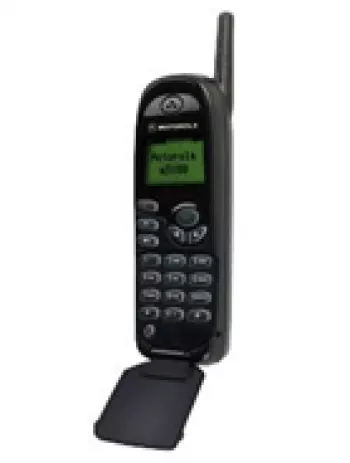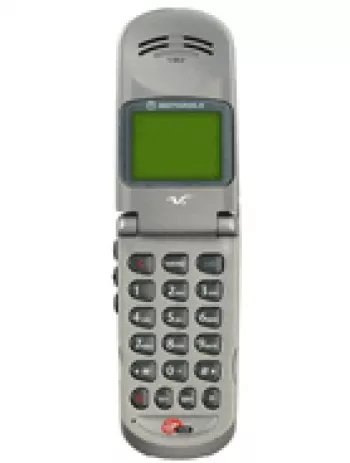
Overview
The Motorola RAZR maxx V6 was a sleek and stylish device that embodied the pinnacle of flip phone design during its release. Announced in July 2006, the RAZR maxx V6 quickly gained popularity due to its impressive features and elegant design. Although it has been discontinued, it remains a memorable piece of mobile phone history for its unique contribution to the evolution of mobile technology.
Network Capabilities
In terms of network technology, the Motorola RAZR maxx V6 was equipped to handle both GSM and HSPA networks. It supported 2G bands including GSM 900, 1800, and 1900, as well as 3G band HSDPA 2100. This allowed users to experience moderate-speed internet browsing with HSPA 3.6/0.384 Mbps. At the time, this was considered quite efficient for a mobile device, offering decent connectivity options for users.
Design and Build
The design of the RAZR maxx V6 was one of its standout features. With dimensions of 104 x 53 x 15 mm and weighing in at just 105 g, the device was both compact and extremely lightweight. It featured a sophisticated clamshell design which was a trademark of the RAZR series. The phone utilized a Mini-SIM, allowing for straightforward connectivity options.
Display
The device showcased a TFT display supporting 256K colors, measuring 2.2 inches in size. With a resolution of 240 x 320 pixels and approximately 182 ppi pixel density, the screen provided vivid colors and clear images. Although the screen-to-body ratio was around 27.2%, it was well-suited to a device of this type and era, balancing the need for portability with functionality.
Camera
Main Camera: The RAZR maxx V6 was equipped with a 2 MP main camera, capable of taking photos and videos. It included an LED flash, which was an advanced feature at the time, enabling users to capture images in low-light conditions.
Selfie Camera: The phone also featured a VGA front-facing camera designed for video calls, offering basic functionality suitable for its time.
Memory and Storage
The internal memory of the RAZR maxx V6 was 50 MB, which was modest by today’s standards but provided sufficient space for basic applications and media at the time. Users could expand storage via a dedicated microSD slot, allowing for the addition of more media and personal data. The phonebook stored up to 1000 entries with photocall capabilities, while call records tracked the last 10 dialed, received, and missed calls.
Audio and Sound
Sound was another area where the RAZR maxx V6 excelled. It featured a loudspeaker for voice calls and hands-free usage, along with support for MP3 ringtones. Although it lacked a 3.5mm audio jack, users could still experience high-quality audio through other compatible devices.
Communications
The device supported Bluetooth 2.0 with A2DP, offering wireless audio streaming capabilities. However, it did not support WLAN or positioning systems, which were more common in later generations of smartphones. For wired connectivity, it featured a USB 2.0 port.
Software and Features
Running on a feature phone operating system, the RAZR maxx V6 supported basic messaging including SMS, EMS, MMS, and instant messaging. Browsing was possible via the WAP 2.0/xHTML browser and Opera 8, allowing users to access the internet with limitations. The device supported Java MIDP 2.0, enabling users to run various Java-based applications and games, enhancing its utility as more than just a communication device.
Battery Life
The phone utilized a removable Li-Ion 940 mAh battery, offering up to 375 hours of standby time and up to 3 hours of talk time. This battery life was competitive for its era, ensuring users could rely on their device throughout the day without frequent recharges.
Miscellaneous Features
In terms of aesthetics, the RAZR maxx V6 was available in a classic black color that emphasized its sleek and professional design. Upon release, it was priced at approximately 140 EUR, positioning it as a mid-range option accessible to a wide range of consumers.
Legacy
The Motorola RAZR maxx V6 remains a notable model in Motorola’s lineup from the mid-2000s. It captured a moment in time where flip phones were at the height of their popularity, offering users a unique blend of style, functionality, and innovation. While smartphones have largely replaced feature phones in today's market, the RAZR maxx V6 is fondly remembered by those who experienced its charm and utility firsthand.
Key Features of Motorola RAZR maxx V6
- Supports GSM and HSPA technology for enhanced connectivity.
- Compact dimensions with a lightweight design: 104 x 53 x 15 mm, 105 g.
- 2.2-inch TFT display with 256K colors and a resolution of 240 x 320 pixels.
- Expandable storage with a dedicated microSD slot, internal memory of 50MB.
- Main 2 MP camera with LED flash, and a VGA front camera for video calls.
- Bluetooth 2.0 with A2DP support for wireless connectivity.
- Removable Li-Ion 940 mAh battery offering standby time up to 375 hours.
- Supports SMS, EMS, MMS, and Instant Messaging for communication.
- Java support with MIDP 2.0 for enhanced application compatibility.
Disadvantages of Motorola RAZR maxx V6
- Limited 3G connectivity with HSDPA only supporting 2100 MHz band.
- Discontinued status means lack of support and updates.
- Small display size with low screen-to-body ratio.
- Low internal memory of 50MB, requiring dependency on microSD card.
- Basic 2 MP main camera and VGA selfie camera with limited video capabilities.
- Lack of a 3.5mm headphone jack limits audio accessory options.
- No WiFi connectivity available, limiting internet access options.
- Absence of built-in GPS positioning feature.
- No radio functionality included.
- Short talk time battery life of up to 3 hours.

View Also
More Phones
All Rights Reserved +14266 Phones © Mobilawy 2025

























